Science & Environment
Crypto’s $130 million election binge has boosted Utah’s John Curtis
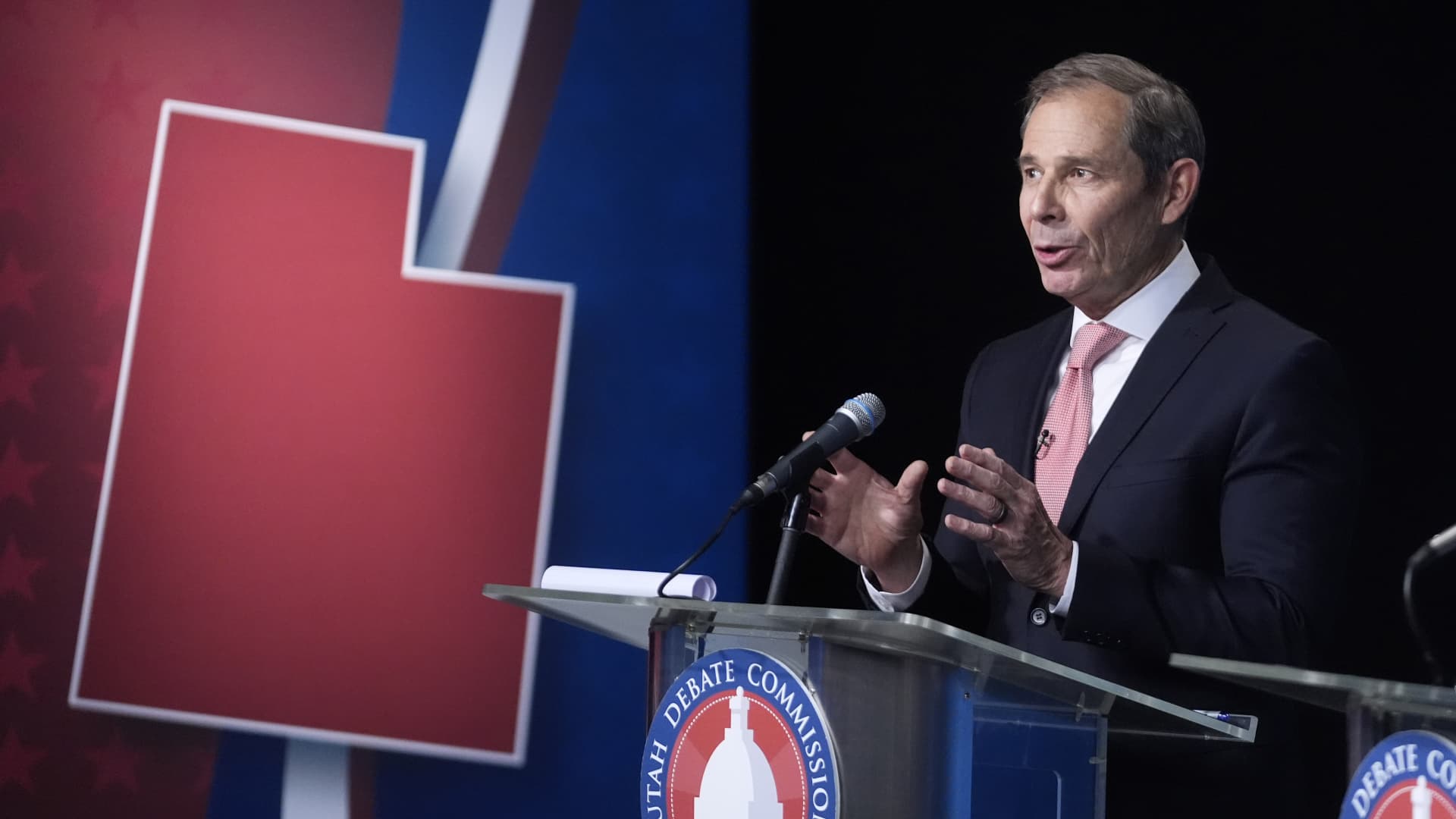
U.S. Rep. John Curtis speaks during the Utah Senate primary debate for Republican contenders battling to win the seat of retiring U.S. Sen. Mitt Romney, June 10, 2024, in Salt Lake City.
Rick Bowmer | AP
SALT LAKE CITY — John Curtis, a Republican congressman from Utah, has become a favorite of the crypto industry in his bid to win the Senate seat held by the departing Mitt Romney. He took a somewhat oblong route through the telecommunications sector to get there.
At an event in Salt Lake City last week, Curtis told a few dozen crypto enthusiasts that he had a conversation a few years ago with some fellow House members about internet service providers and how to incentivize them to boost their offerings. The various lawmakers were throwing around different connection speeds — 50 megabits, 100 megabits — but when Curtis asked whether they’d ever run a speed test, he got puzzling responses.
“They looked at me like I was from another planet,” Curtis told the crowd at the Permissionless conference.
Curtis, 64, said he realized then that lawmakers needed to be smarter about regulations and actually understand the user experience. That’s particularly true in crypto, he said.
“This is so important to get government involved, because if they don’t understand what you’re doing, they’ll make really bad decisions,” the Provo-based congressman said, as the attendees nodded their head in unison. “The worst part of regulation is its unpredictability.”
Curtis’ attitude toward crypto is a big reason why digital coin enthusiasts have filled his coffers in his campaign against Democratic candidate Caroline Gleich, setting him up for what appears to be a landslide victory next month.
The Defend American Jobs PAC, a single-issue committee focused on cryptocurrency and blockchain policy, has contributed more than $1.9 million to Curtis’ campaign, according to Federal Election Commission data compiled by crypto market and blockchain analyst James Delmore and verified by CNBC. Additionally, the PAC spent more than $1.5 million to oppose Curtis’ Republican primary challenger, Trent Staggs.

Ben Lucas, Curtis’ campaign spokesman, declined an interview on behalf of the congressman. He sent a statement from Corey Newman, the chief of staff, saying that, “John has always been a strong supporter of the crypto industry as it will help Utah’s economy continue to grow and be a great place to create jobs.”
The sprawling and decentralized digital asset industry is backing Curtis and others who are publicly adopting a pro-crypto policy within their campaigns. The crypto industry accounts for nearly half of all donations made by corporations this election cycle as the sector outpaces both the big banks and oil. Of the 42 primary candidates that crypto-backed super PACs supported, they were successful in 36.
In total, crypto groups have spent over $130 million in congressional races for this year’s election, including the primaries, according to FEC data.
Crypto picks its targets
Venture firm Andreessen Horowitz found in its recent State of Crypto report that more than 40 million Americans hold crypto, a group that’s young and bipartisan. The report said 51% of them indicated they’re likely to throw their weight behind crypto-friendly candidates.
Curtis says the best thing the industry can do is police itself, and then come to lawmakers with the right kind of guardrails, striking a balance of safety and security without excessive regulation.
Three crypto PACs, which are primarily backed by Coinbase, Ripple, and Andreessen Horowitz, have been targeting competitive Senate and House races across the U.S.
Protect Progress has given more than $10 million apiece to Senate candidates in Arizona and Michigan. In Arizona, the group favors Democrat Ruben Gallego, who is vying for the seat being vacated by Kyrsten Sinema. In Michigan, the preferred choice is Elissa Slotkin, who is currently a Democratic House member.
U.S. Sen. Elizabeth Warren (D-MA) becomes emotional as the crowd cheers on Day 4 of the Democratic National Convention (DNC) at the United Center in Chicago, Illinois, U.S., August 22, 2024.
Kevin Wurm | Reuters
The Republican candidates in Indiana and West Virginia have each received more than $3 million from Defend American Jobs. In Massachusetts, a super PAC for Republican John Deaton has pulled in $2.6 million from the crypto industry. Deaton, however, is polling way behind Democratic Sen. Elizabeth Warren, who is one of the crypto sector’s top antagonists in Washington.
“Elizabeth Warren is not going to lose her election in Massachusetts, so the industry can’t get rid of Warren,” said Delmore. “But they can at least help to vote out candidates who are allied with her against the crypto industry.”
One big target is Ohio Democratic Sen. Sherrod Brown, the chair of the banking committee. Some $40 million of crypto money has been directed at defeating Brown, and one PAC has paid for five ads designed to boost awareness of his Republican rival, Bernie Moreno, a blockchain entrepreneur. The race is currently very close and is crucial in determining which party will control the Senate.
In House races, around $3.6 million in crypto PAC money has gone to candidates in Arizona, $5.4 million in New York, more than $4.8 million in Virginia, and $5.7 million in California, with half of that spend going to Republican Michelle Park Steel.
Crypto PAC money has been party agnostic and not just focused on battleground districts. The focus is on supporting lawmakers who embrace regulation that favors the technology rather than getting in its way.
“When we talk about digital assets, when we talk about crypto, that is not about Republicans and Democrats,” said House Majority Whip Rep. Tom Emmer (R-Minn.), at Permissionless. “That’s about Americans, that’s about decentralization of a system that has been, literally, consolidated at the top.”
WATCH: Trump family given $337.5 million token stake in new crypto project

Science & Environment
What will space exploration be like in 50 years?

Day trips to the Moon, living on Mars, space elevators… when it comes to the future of space exploration, some possibilities might be closer than we think!
Made by BBC Ideas in partnership with the Royal Society, external
Animated by Jess Mountfield, narrated by Dr Becky Smethurst at the University of Oxford
Science & Environment
Sydney reopens beaches after tar ball scare
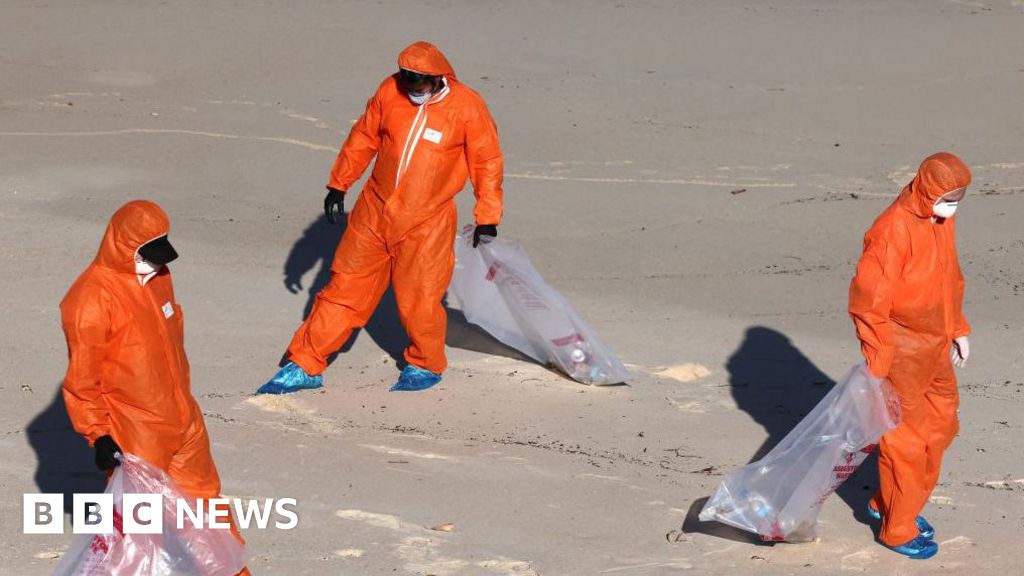
 AFP
AFPBeaches in the Australian city of Sydney have reopened for swimmers after being closed earlier this week when thousands of mysterious black tar-like balls washed ashore, prompting health concerns.
Officials say tests found the balls to be formed from chemicals similar to those in cosmetics and cleaning products but it is still unclear where they came from.
Eight beaches including Bondi – the city’s most famous – were closed and a massive clean-up ordered amid fears the black deposits were toxic.
New South Wales’s Environment Minister, Penny Sharpe, said investigations were continuing to establish the source of the pollution and who was responsible.
The state’s maritime authority said the balls were not highly toxic to humans but should not be touched or picked up.
“Based on advice from the Environment Protection Authority, we can now confirm the balls are made up of fatty acids, chemicals consistent with those found in cleaning and cosmetic products, mixed with some fuel oil,” said New South Wales Maritime Executive Director Mark Hutchings.
 EPA
EPAThe New South Wales Environment Protection Authority (EPA) said laboratory testing was continuing, to try to determine where the balls came from, Reuters news agency reports.
“It is still somewhat of a mystery and may take a few more days to determine origin,” said EPA Executive Director Stephen Beaman.
The tar balls were “not harmful when on the ground but should not be touched or picked up”, Mr Hutchings was quoted as saying by Australian broadcaster ABC.
“If you see these balls, report them to a lifeguard. If you or your family accidentally touches one, wash your hands with soap and water or baby oil.”
Science & Environment
Indestructible quantum rifts can exist in two places at once
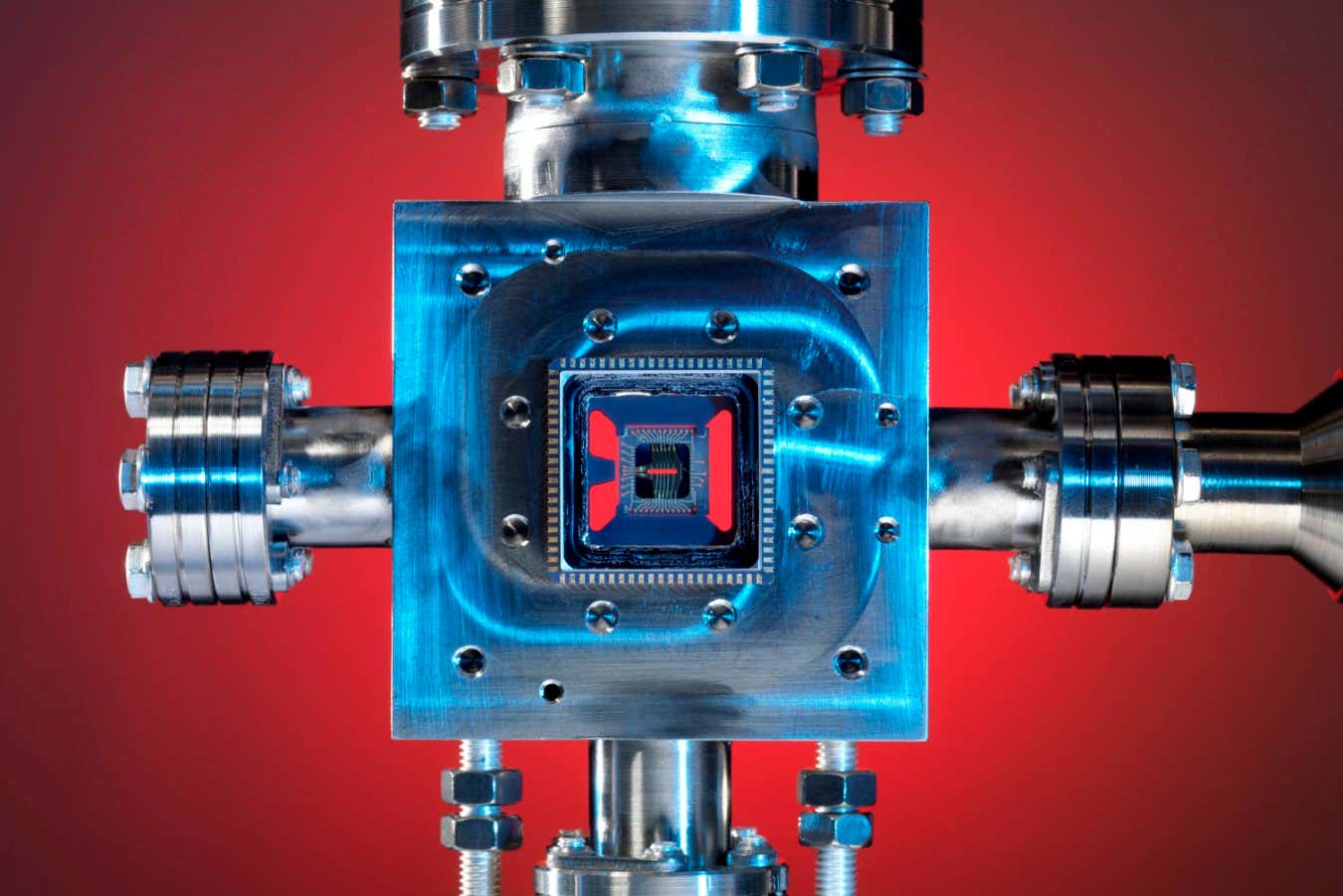

An ion trap helped create a quantum defect in two places at once
ANDREW BROOKES, NATIONAL PHYSICAL LABORATORY/SCIENCE PHOTO LIBRARY
Exotic quantum rifts have been created with charged atoms, and they exist in a superposition of being in two places at once. This is a first step towards better understanding the behaviour of such quantum defects in everything from materials to an entire universe.
Defects are ubiquitous – think of tears in textiles or cloudy imperfections in shiny crystals – but in quantum systems, they can have the extra property of being topological. That means the overall structure of the…
Science & Environment
BlackRock’s ETF chief says 75% of its bitcoin buyers are crypto fans new to Wall Street
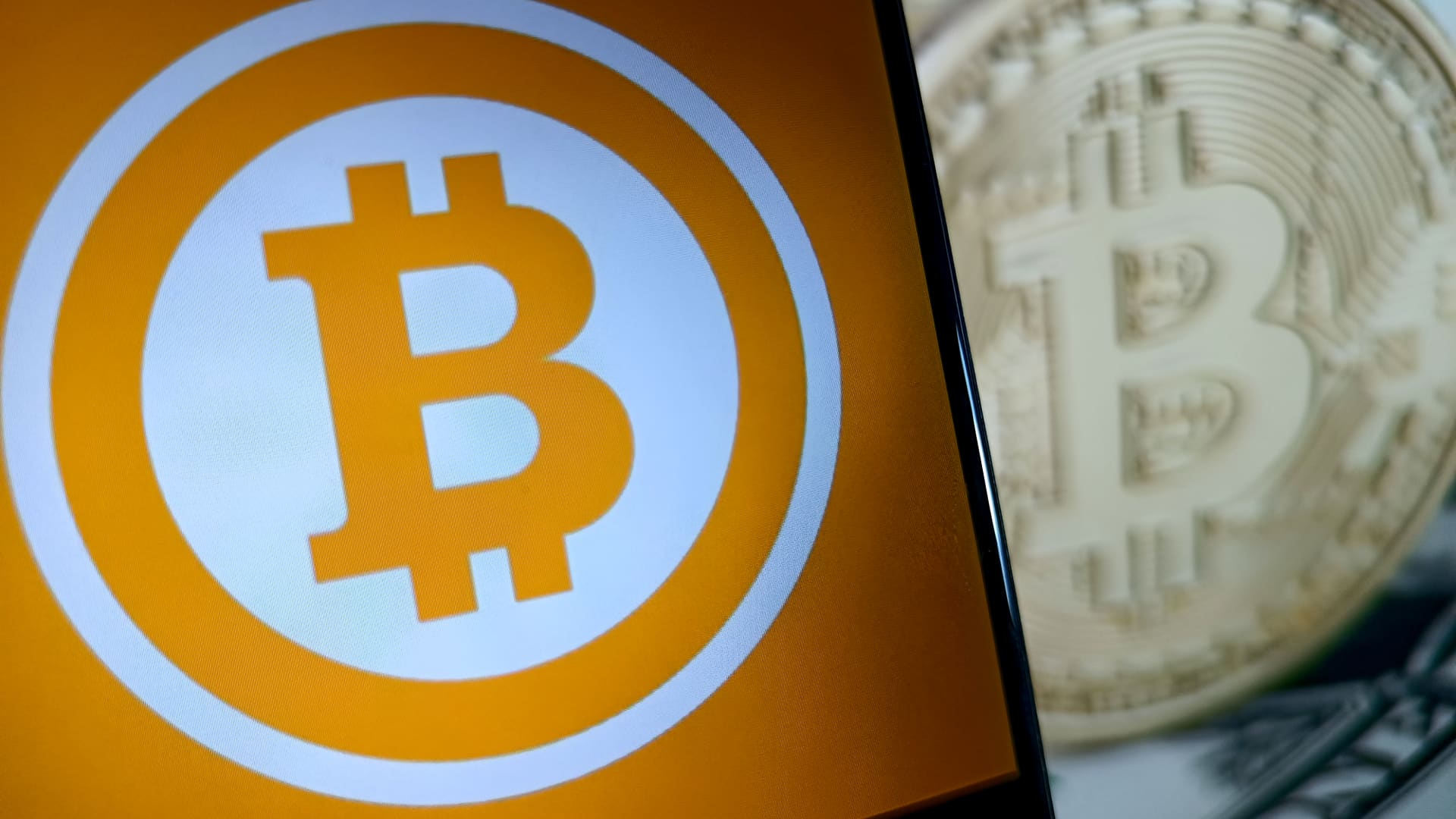
Marquee at the main entrance to BlackRock headquarters building in Manhattan.
Erik Mcgregor | Lightrocket | Getty Images
SALT LAKE CITY — A year ago, Samara Cohen believed there was so much pent-up demand for bitcoin that she and her team at BlackRock launched one of the first-ever spot bitcoin exchange-traded products in the U.S. Now investors are flocking in, and a lot of them are crypto enthusiasts who are new to Wall Street.
Cohen, who heads up the asset manager’s exchange-traded funds and index investments as chief investment officer, told CNBC that BlackRock now sees the demand was for a better way to access bitcoin. “It was for the ETF wrapper,” she told CNBC on stage at the Permissionless Conference in Utah.
The total market cap of all eleven spot bitcoin ETFs now tops $63 billion, with total flows of nearly $20 billion. In the last five trading days alone, spot bitcoin ETFs have seen net inflows of more than $2.1 billion, with BlackRock accounting for half of those sales.
The spike in trading volume comes as bitcoin hit its highest level since July this week, trading above $68,300. Bitcoin ended the third quarter up around 140% from the same quarter a year ago, outpacing the S&P 500, as these spot token funds and the crypto market cap move higher in lock-step. Crypto-aligned stock Coinbase closed up about 24% this week, its best week since February.
Cohen told CNBC that part of the strategy for attracting customers to its funds was teaching crypto investors about the benefits of exchange-traded products (ETPs).
13F filings, which offer quarterly reads on equity positions taken by large investors, show that 80% of the buyers of these new spot bitcoin products in the U.S. are direct investors. Of the 80% of direct investors, Cohen told CNBC that 75% had never before owned an iShare, one of the best-known and largest ETF providers on the planet.
“So we went into this journey with the expectation that we needed to educate ETF investors on crypto and on bitcoin specifically,” said Cohen. “As it turns out, we have done a lot of education of crypto investors on the benefits of the ETP wrapper.”
Before the U.S. Securities and Exchange Commission green-lit spot bitcoin funds in January, investors had a few ways to buy and custody cryptocurrencies. A centralized exchange like Coinbase was among the most user-friendly options for U.S investors. But the blockbuster debut of bitcoin ETPs has laid bare to Cohen and others across Wall Street, that crypto exchanges weren’t giving digital asset investors everything they needed.

BlackRock’s IBIT vs. bitcoin YTD
It helps that the U.S. is a huge market for digital assets. New data from Chainalysis shows that North America remains the biggest crypto market globally, accounting for nearly 23% of all crypto trading volume. The blockchain analytics platform estimates that between July 2023 and July 2024, there was $1.3 trillion in on-chain value received.
Venture firm a16z found in its recently released State of Crypto report that more than 40 million Americans hold crypto.
So far, adoption has mostly been through wealth management clients asking advisors to add new spot crypto products to their portfolio.

In August, Morgan Stanley was the first big bank to allow its 15,000 financial advisors to pitch bitcoin ETFs from BlackRock and Fidelity to clients with a net worth over $1.5 million. Other firms are still performing in-house due diligence before allowing their armies of FAs to start actively pitching the funds.
“Wealth manager allocators have not been allocating,” VanEck CEO Jan van Eck told CNBC in Utah. “I mean, they’re barely even warming up.”
Van Eck drew parallels to the European market, where the company has 12 token-based products trading in Europe.
“It’s exactly what we see in Europe,” he said. “Very few private banks have really approved investment in bitcoin or ethereum or anything else in a major way.” Van Eck said his company has about $2 billion in its European crypto ETPs, and that a lot of the volume is from individual investors.
Wall Street needs rules from lawmakers on Capitol Hill before it gets more comfortable with crypto.
ETFs create transparency
Cohen thinks that in a lot of ways, ETFs and blockchain technology are solving for similar things.
“ETFs have been a decentralizing force in TradFi markets that have brought a lot more access and transparency, and importantly, really accelerated in growth during the post crisis 2008, 2009 period,” said Cohen, referring to traditional finance markets.
“I find it incredibly meaningful to look at the fact that the bitcoin whitepaper was published on October 31, 2008, and then you have the G20 leaders from around the world meeting to discuss the aftermath of the financial crisis and how do you create more transparency through public reporting,” Cohen continued.
BlackRock took on less risk by using counterparty clearing and multilateral trading. In TradFi markets, those moves created huge tailwinds for ETFs.
“Then at the same time, DeFi is becoming a reality over the intervening 15 years,” she said.
“Was this a win for Bitcoin? Was this a win for ETPs? To me, the answer is: It’s a win for investors, to the extent we can effectively marry these ecosystems which are solving for the same goals.”

Science & Environment
Trump crypto project allows ex-president family to make 75% of revenue
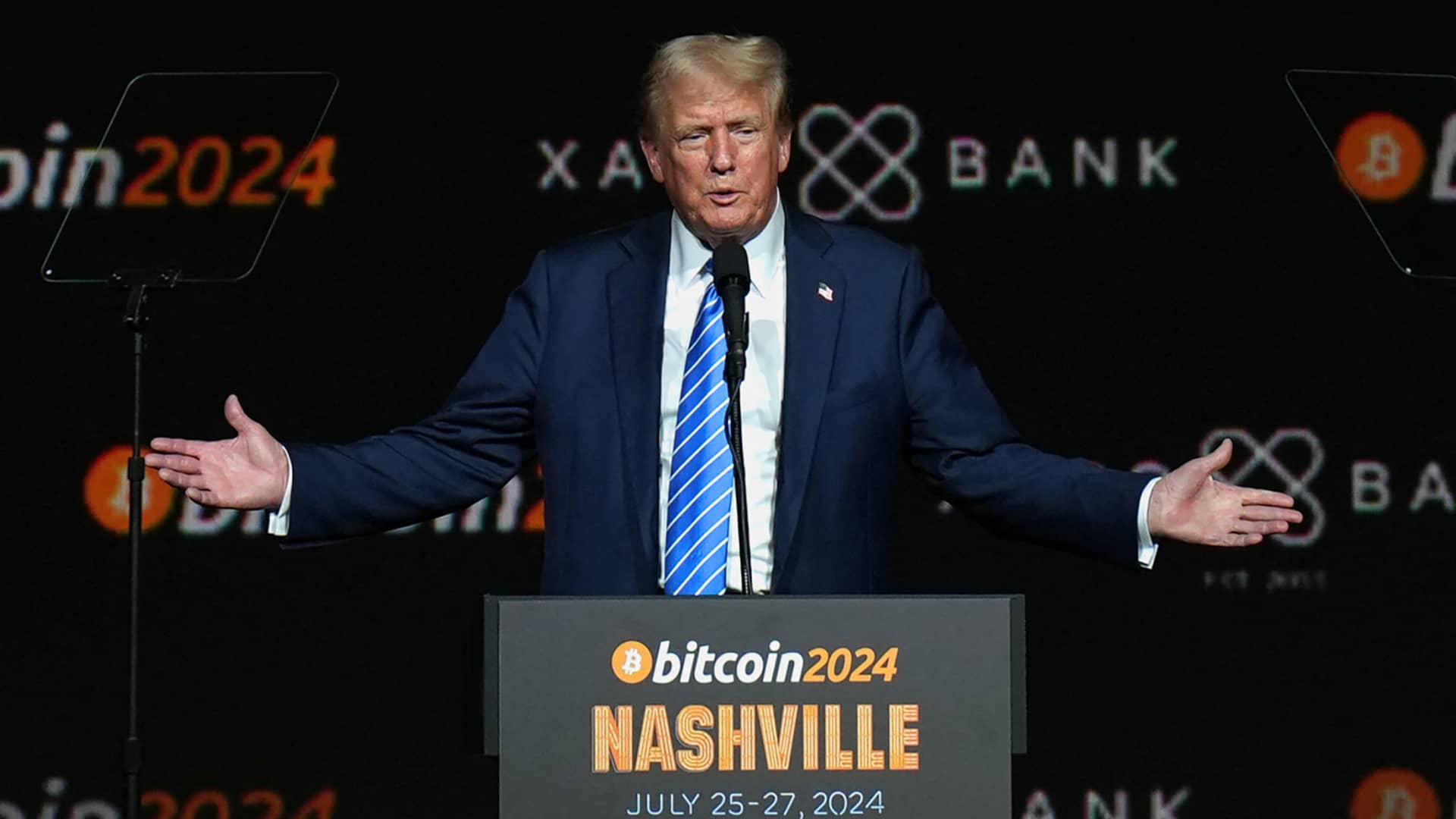
Donald Trump’s crypto project, World Liberty Financial, published a 13-page document on Thursday, describing its mission, how tokens can be allocated, and indicating that the Republican presidential nominee and his family could take home 75% of net revenue.
In what it calls the “World Liberty Gold Paper,” WLF said the Trump family will receive 22.5 billion “$WLFI” tokens, currently valued at $337.5 million, based on the price of 1.5 cents per token at launch this week.
Trump, who’s in a virtual dead heat with Vice President Kamala Harris as the election reaches its closing stages, has spent months pumping his crypto project, previously branding it as “The DeFiant Ones,” a play on DeFi, short for decentralized finance.
On Tuesday, the project launched the WLFI token and said in a roadmap that it was looking to raise $300 million at a $1.5 billion valuation in its initial sale. As of Thursday, only $12.9 million worth of the token have been sold, according to its website.
The paper released on Thursday shows that Trump and his family assume no liability. It indicates that none of them are directors, employees, managers or operators of WLF or its affiliates, and said the project and the tokens “are not political and have no affiliation with any political campaign.”
Neither WLF nor the Trump campaign immediately responded to a request for comment.
Crypto projects typically release white papers before they launch their coins, offering a guide so that investors can learn more about the mission, goals and how future tokens get allocated. WLF’s paper says that a Delaware-based company named DT Marks DEFI LLC, which is connected to the former president, is set to receive three-quarters of the net protocol revenues.
WLF bills itself as a crypto bank where customers will be encouraged to borrow, lend and invest in digital coins. The document released Thursday defines net protocol revenue as income to WLF from “any source, including without limitation platform use fees, token sale proceeds, advertising or other sources of revenue, after deduction of agreed expenses and reserves for WLF’s continued operations.”
Some $30 million of the the initial revenue is earmarked to be held in a reserve intended to cover operating expenses and other financial obligations.
The remaining 25% of net protocol revenue is set to go to Axiom Management Group, or AMG, a Puerto Rico LLC wholly owned by Chase Herro and Zachary Folkman, two of the co-founders.
Folkman previously had a company called Date Hotter Girls and reportedly helped develop crypto project Dough Finance. Herro worked on Dough and launched another crypto trading business a decade ago called Pacer Capital, which appears to now be defunct.
AMG has agreed to allocate half of its rights to net protocol revenues to a third LLC called WC Digital Fi, which is an affiliate of Trump’s close friend and political donor, Steve Witkoff, as well as to “certain of his family members.” Witkoff’s son, Zachary, is also listed as one of the co-founders of the project.
Folkman previously said just 20% of WLF’s tokens would be allotted to the founding team, which includes the Trump family. The paper spells out the breakdown of anticipated coin allocation, with 35% of total supply allocated to the token sale, 32.5% to community growth and incentives, 30% to initial support allocation, and 2.5% to team and advisors.
The document specifies in the fine print that these “anticipated token distribution amounts are subject to change.” It’s unclear which categories include Trump and his family.
The paper calls Trump the “chief crypto advocate.” His three sons are all “Web3 ambassadors.”
Science & Environment
JPMorgan says buy power producers as AI data centers shift electric demand
-

 Science & Environment1 month ago
Science & Environment1 month agoHyperelastic gel is one of the stretchiest materials known to science
-

 Technology3 weeks ago
Technology3 weeks agoIs sharing your smartphone PIN part of a healthy relationship?
-

 Science & Environment1 month ago
Science & Environment1 month agoHow to unsnarl a tangle of threads, according to physics
-

 Science & Environment1 month ago
Science & Environment1 month ago‘Running of the bulls’ festival crowds move like charged particles
-

 Technology1 month ago
Technology1 month agoWould-be reality TV contestants ‘not looking real’
-

 Science & Environment1 month ago
Science & Environment1 month agoMaxwell’s demon charges quantum batteries inside of a quantum computer
-

 Science & Environment1 month ago
Science & Environment1 month agoLiquid crystals could improve quantum communication devices
-

 Science & Environment3 weeks ago
Science & Environment3 weeks agoX-rays reveal half-billion-year-old insect ancestor
-

 Womens Workouts4 weeks ago
Womens Workouts4 weeks ago3 Day Full Body Women’s Dumbbell Only Workout
-

 Science & Environment1 month ago
Science & Environment1 month agoQuantum ‘supersolid’ matter stirred using magnets
-

 Science & Environment1 month ago
Science & Environment1 month agoSunlight-trapping device can generate temperatures over 1000°C
-

 Science & Environment1 month ago
Science & Environment1 month agoWhy this is a golden age for life to thrive across the universe
-

 Science & Environment1 month ago
Science & Environment1 month agoQuantum forces used to automatically assemble tiny device
-

 Science & Environment1 month ago
Science & Environment1 month agoHow to wrap your mind around the real multiverse
-

 Science & Environment1 month ago
Science & Environment1 month agoA slight curve helps rocks make the biggest splash
-

 Science & Environment1 month ago
Science & Environment1 month agoNerve fibres in the brain could generate quantum entanglement
-

 Science & Environment1 month ago
Science & Environment1 month agoLaser helps turn an electron into a coil of mass and charge
-

 Science & Environment1 month ago
Science & Environment1 month agoITER: Is the world’s biggest fusion experiment dead after new delay to 2035?
-
News1 month ago
the pick of new debut fiction
-

 News1 month ago
News1 month ago▶️ Hamas in the West Bank: Rising Support and Deadly Attacks You Might Not Know About
-

 Science & Environment1 month ago
Science & Environment1 month agoA new kind of experiment at the Large Hadron Collider could unravel quantum reality
-

 News4 weeks ago
News4 weeks agoOur millionaire neighbour blocks us from using public footpath & screams at us in street.. it’s like living in a WARZONE – WordupNews
-

 Science & Environment1 month ago
Science & Environment1 month agoTime travel sci-fi novel is a rip-roaringly good thought experiment
-

 News1 month ago
News1 month ago▶️ Media Bias: How They Spin Attack on Hezbollah and Ignore the Reality
-

 Technology3 weeks ago
Technology3 weeks agoWhy Machines Learn: A clever primer makes sense of what makes AI possible
-

 Science & Environment1 month ago
Science & Environment1 month agoNuclear fusion experiment overcomes two key operating hurdles
-

 Science & Environment1 month ago
Science & Environment1 month agoPhysicists are grappling with their own reproducibility crisis
-

 Technology3 weeks ago
Technology3 weeks agoUkraine is using AI to manage the removal of Russian landmines
-

 Technology2 weeks ago
Technology2 weeks agoThis AI video generator can melt, crush, blow up, or turn anything into cake
-

 Technology3 weeks ago
Technology3 weeks agoMicrophone made of atom-thick graphene could be used in smartphones
-

 Sport2 weeks ago
Sport2 weeks agoWales fall to second loss of WXV against Italy
-

 Science & Environment1 month ago
Science & Environment1 month agoPhysicists have worked out how to melt any material
-
Business3 weeks ago
Eurosceptic Andrej Babiš eyes return to power in Czech Republic
-

 MMA2 weeks ago
MMA2 weeks agoJulianna Peña trashes Raquel Pennington’s behavior as champ
-
Business2 weeks ago
DoJ accuses Donald Trump of ‘private criminal effort’ to overturn 2020 election
-

 Business2 weeks ago
Business2 weeks agoWhen to tip and when not to tip
-

 Sport2 weeks ago
Sport2 weeks agoCoco Gauff stages superb comeback to reach China Open final
-

 TV2 weeks ago
TV2 weeks agoসারাদেশে দিনব্যাপী বৃষ্টির পূর্বাভাস; সমুদ্রবন্দরে ৩ নম্বর সংকেত | Weather Today | Jamuna TV
-

 News1 month ago
News1 month agoYou’re a Hypocrite, And So Am I
-

 Science & Environment1 month ago
Science & Environment1 month agoCaroline Ellison aims to duck prison sentence for role in FTX collapse
-

 Science & Environment1 month ago
Science & Environment1 month agoRethinking space and time could let us do away with dark matter
-

 Sport4 weeks ago
Sport4 weeks agoJoshua vs Dubois: Chris Eubank Jr says ‘AJ’ could beat Tyson Fury and any other heavyweight in the world
-

 Sport3 weeks ago
Sport3 weeks agoWorld’s sexiest referee Claudia Romani shows off incredible figure in animal print bikini on South Beach
-

 News2 weeks ago
News2 weeks agoMassive blasts in Beirut after renewed Israeli air strikes
-

 TV2 weeks ago
TV2 weeks agoLove Island star sparks feud rumours as one Islander is missing from glam girls’ night
-

 Technology3 weeks ago
Technology3 weeks agoUniversity examiners fail to spot ChatGPT answers in real-world test
-

 News2 weeks ago
News2 weeks agoHeartbreaking end to search as body of influencer, 27, found after yacht party shipwreck on ‘Devil’s Throat’ coastline
-

 News2 weeks ago
News2 weeks agoHull KR 10-8 Warrington Wolves – Robins reach first Super League Grand Final
-

 News2 weeks ago
News2 weeks agoNavigating the News Void: Opportunities for Revitalization
-

 News1 month ago
News1 month agoNew investigation ordered into ‘doorstep murder’ of Alistair Wilson
-

 Health & fitness1 month ago
Health & fitness1 month agoThe secret to a six pack – and how to keep your washboard abs in 2022
-

 Science & Environment1 month ago
Science & Environment1 month agoA tale of two mysteries: ghostly neutrinos and the proton decay puzzle
-
News4 weeks ago
The Project Censored Newsletter – May 2024
-

 Technology3 weeks ago
Technology3 weeks agoQuantum computers may work better when they ignore causality
-

 Sport3 weeks ago
Sport3 weeks agoWatch UFC star deliver ‘one of the most brutal knockouts ever’ that left opponent laid spark out on the canvas
-

 MMA3 weeks ago
MMA3 weeks agoConor McGregor challenges ‘woeful’ Belal Muhammad, tells Ilia Topuria it’s ‘on sight’
-

 Sport2 weeks ago
Sport2 weeks agoSturm Graz: How Austrians ended Red Bull’s title dominance
-

 MMA2 weeks ago
MMA2 weeks agoDana White’s Contender Series 74 recap, analysis, winner grades
-

 Football2 weeks ago
Football2 weeks agoRangers & Celtic ready for first SWPL derby showdown
-

 Technology2 weeks ago
Technology2 weeks agoTexas is suing TikTok for allegedly violating its new child privacy law
-

 Technology2 weeks ago
Technology2 weeks agoSamsung Passkeys will work with Samsung’s smart home devices
-

 Technology2 weeks ago
Technology2 weeks agoA very underrated horror movie sequel is streaming on Max
-

 News2 weeks ago
News2 weeks ago▶ Hamas Spent $1B on Tunnels Instead of Investing in a Future for Gaza’s People
-

 News2 weeks ago
News2 weeks agoHeavy strikes shake Beirut as Israel expands Lebanon campaign
-

 Technology3 weeks ago
Technology3 weeks agoEpic Games CEO Tim Sweeney renews blast at ‘gatekeeper’ platform owners
-
Business2 weeks ago
LVMH strikes sponsorship deal with Formula 1
-

 TV2 weeks ago
TV2 weeks agoPhillip Schofield accidentally sets his camp on FIRE after using emergency radio to Channel 5 crew
-

 Technology2 weeks ago
Technology2 weeks agoAmazon’s Ring just doubled the price of its alarm monitoring service for grandfathered customers
-

 News2 weeks ago
News2 weeks agoBalancing India and China Is the Challenge for Sri Lanka’s Dissanayake
-

 Technology4 weeks ago
Technology4 weeks agoRobo-tuna reveals how foldable fins help the speedy fish manoeuvre
-
Politics3 weeks ago
Robert Jenrick vows to cut aid to countries that do not take back refused asylum seekers | Robert Jenrick
-

 Technology3 weeks ago
Technology3 weeks ago‘From a toaster to a server’: UK startup promises 5x ‘speed up without changing a line of code’ as it plans to take on Nvidia, AMD in the generative AI battlefield
-
Business3 weeks ago
Should London’s tax exiles head for Spain, Italy . . . or Wales?
-

 Football3 weeks ago
Football3 weeks agoFootball Focus: Martin Keown on Liverpool’s Alisson Becker
-

 Technology1 month ago
Technology1 month agoThe ‘superfood’ taking over fields in northern India
-

 Science & Environment1 month ago
Science & Environment1 month agoFuture of fusion: How the UK’s JET reactor paved the way for ITER
-

 News4 weeks ago
News4 weeks agoIsrael strikes Lebanese targets as Hizbollah chief warns of ‘red lines’ crossed
-
Politics4 weeks ago
UK consumer confidence falls sharply amid fears of ‘painful’ budget | Economics
-

 Technology3 weeks ago
Technology3 weeks agoArtificial flavours released by cooking aim to improve lab-grown meat
-
Business2 weeks ago
Bank of England warns of ‘future stress’ from hedge fund bets against US Treasuries
-

 Business2 weeks ago
Business2 weeks agoChancellor Rachel Reeves says she needs to raise £20bn. How might she do it?
-
Politics2 weeks ago
Rosie Duffield’s savage departure raises difficult questions for Keir Starmer. He’d be foolish to ignore them | Gaby Hinsliff
-
Business2 weeks ago
CEOs turn to podcasts to control their message
-

 MMA2 weeks ago
MMA2 weeks agoPereira vs. Rountree prediction: Champ chases legend status
-
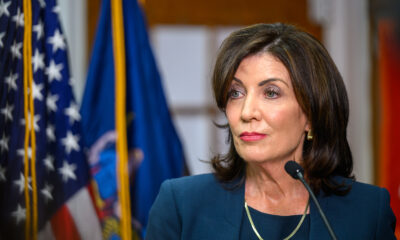
 Politics2 weeks ago
Politics2 weeks agoHochul’s careful conversations
-

 Technology2 weeks ago
Technology2 weeks agoApple iPhone 16 Plus vs Samsung Galaxy S24+
-

 Technology2 weeks ago
Technology2 weeks agoThe best shows on Max (formerly HBO Max) right now
-
Business3 weeks ago
Ukraine faces its darkest hour
-

 Sport2 weeks ago
Sport2 weeks agoLauren Keen-Hawkins: Injured amateur jockey continues progress from serious head injury
-
Business2 weeks ago
Top shale boss says US ‘unusually vulnerable’ to Middle East oil shock
-

 Technology2 weeks ago
Technology2 weeks agoMusk faces SEC questions over X takeover
-
Business2 weeks ago
Sterling slides after Bailey says BoE could be ‘a bit more aggressive’ on rates
-

 News2 weeks ago
News2 weeks agoFamily plans to honor hurricane victim using logs from fallen tree that killed him
-
Business2 weeks ago
The search for Japan’s ‘lost’ art
-

 News1 month ago
News1 month agoHow FedEx CEO Raj Subramaniam Is Adapting to a Post-Pandemic Economy
-

 CryptoCurrency4 weeks ago
CryptoCurrency4 weeks agoCardano founder to meet Argentina president Javier Milei
-

 Science & Environment1 month ago
Science & Environment1 month agoUK spurns European invitation to join ITER nuclear fusion project
-

 Sport4 weeks ago
Sport4 weeks agoUFC Edmonton fight card revealed, including Brandon Moreno vs. Amir Albazi headliner
-

 News4 weeks ago
News4 weeks agoWhy Is Everyone Excited About These Smart Insoles?
-

 Science & Environment4 weeks ago
Science & Environment4 weeks agoMeet the world's first female male model | 7.30


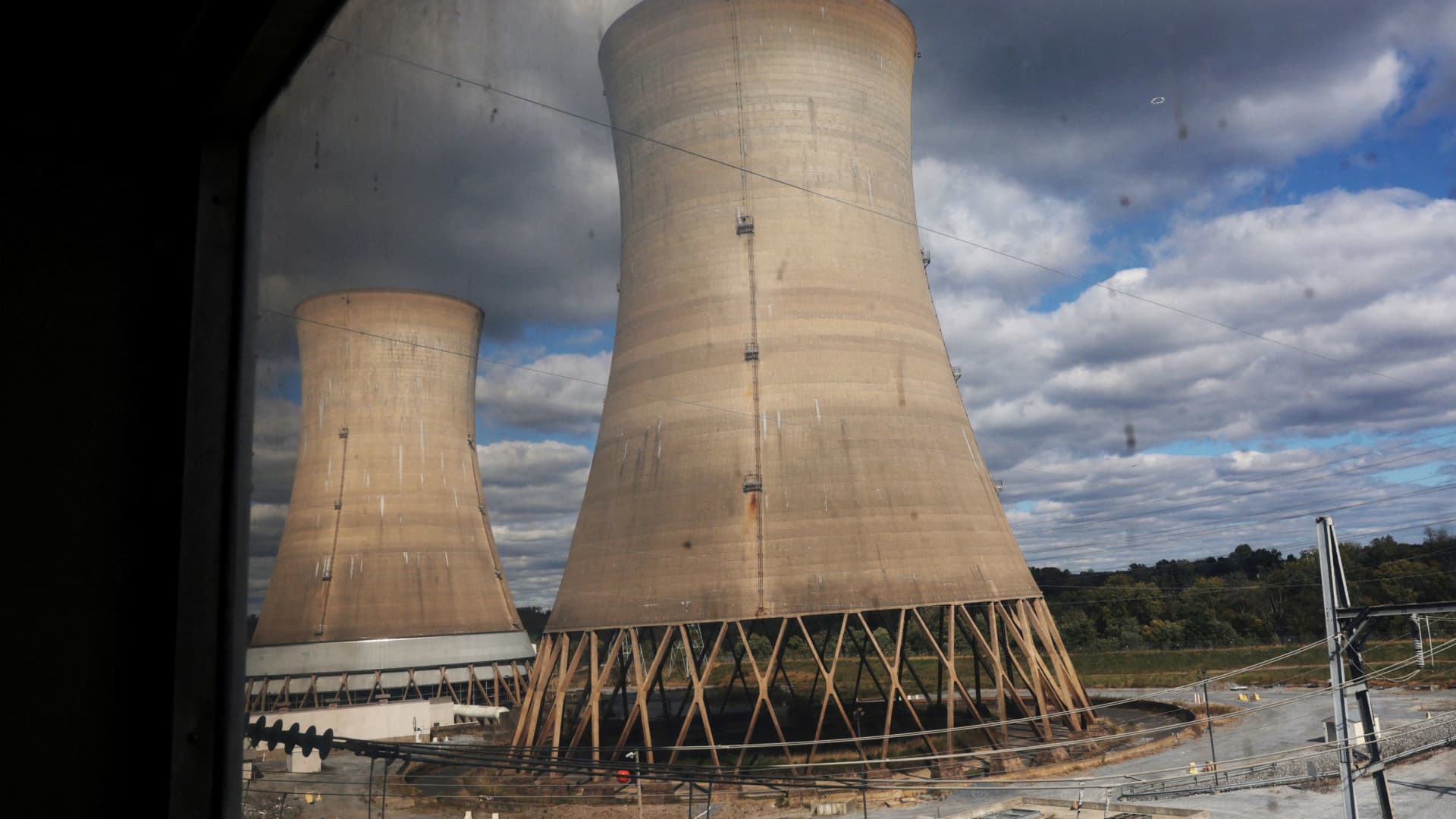
You must be logged in to post a comment Login